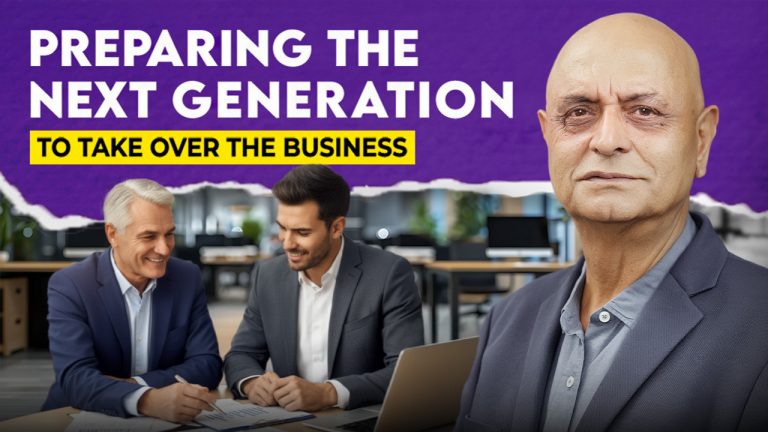We Couldn’t Follow-up.. We Were Busy Making Quotations
“I get all my enquiries from IndiaMart” answered Sumit, owner of a Water Treatment Equipment manufacturing company.. which prompted me to ask a follow up question “In that case, what’s your average conversation rate?” After a momentary silence, Sumit shrugged his shoulders and replied with uncertainty “I don’t know.. guess it would be about 10% ?”.
“We need to review your enquiry qualification process” I said. I wanted to help Sumit estimate & improve his conversion rate “Do you know how many proposals do you submit in a month and how many orders you receive?” Sumit guesstimated, “roughly 6 to 8 quotes go out in a week and we get about 1 project order in a month”. By approximation, the conversion rate was 3 to 5 %, quite lower than 10% he thought earlier.
Further discussions revealed few more common challenges around sales conversions and I summarized the discussion… “Sumit, what you are telling me is that ONE – you are working on costing and designing for 25 projects at enquiry stage in a month, out of which you are getting one project order and your efforts on 24 are wasted. (4% fruitful – 96% waste) TWO – Not every enquiry gets to finalization stage and most enquiries are for cost comparison i.e. they are junk enquiries (50%). THREE- You are ‘busy’ making proposals and hence not getting time to follow up … probably losing out on genuine orders.” Sumit started realizing that something is missing, something is wrong.
I continued, “You aren’t sure which enquiry is genuine and which ones are junk. You understand that only when you follow up after submitting your proposal.” Sumit nodded in agreement.
“Would you like to know a mantra which will differentiate genuine enquiries from the junk before spending any time on it? I asked. I could sense curiosity & excitement in Sumit’s reply. “That would be awesome. I will then stop wasting time on junk and use that time effectively in closing genuine enquiries.”.
I knew there are more benefits of qualifying leads than what Sumit mentioned. “What else?” I asked. Sumit could think of more “I will be more confident and proactive with serious buyers, otherwise if I am rejected 96% of time, it’s difficult to keep same positive attitude in sales calls.”
Having made sure that Sumit understands the consequences of not qualifying the prospects (Time waste, lack of follow up, lack of motivation, low conversion rate, false hope, absurd sales projections etc) and benefits of qualifying every prospect (More free time, effective follow up, higher conversion rate, high morale, confidence etc) I decided to explain the simple guidelines.
“Sumit, first thing that you will do as soon as you receive any enquiry, whether from Indiamart, TradeIndia or any other source including word of mouth… you will first acknowledge it by mail or call and then qualify the enquiry. This is very important step in sales and I’ll explain you how to. It’s easy and it’s simple.” I assured Sumit.
If you are in a similar situation like Sumit, these guidelines will be very useful.
- First step is to list down as many qualification parameters as you can, preferably in a brain-storming session with your team.
- This list will include the type of customers YOU WANT to work with and YOU DON’T WANT to work with. Let ideas flow freely.
- Look at your best customers (A-grade customers) and find common attributes and demographics.
- Look at the list of ‘Pain in the Axx’ customer and find common attributes and demographics.
- List down the reasons for your lost orders / Un-decided orders. What are the most common reasons?
- Define your top 10 qualification parameters. You may have less, you may have more. This is left to your judgement and how well you have defined your niche. For illustration, the disqualification parameters could be as follows; Too big to deal with, too small to deal with, not in product range, in different geography than we serve, delivery time not matching, payment terms not acceptable, does not belong to our niche customer segment, looking for specific brand / make which we don’t deal with, budget constraints, values mismatch, Industry segment, govt. or private etc.
- Broadly speaking, there are two types of qualification parameters, Negotiable & Non-Negotiable. Non-negotiable parameter is like VETO. Even one such parameter will block the deal. Whereas Negotiable parameters will be situational. Few are accepted in some situations and few are not.
- Out of top 10 parameters, identify the parameters which are Non-Negotiable. i.e. you will not quote if the enquiry / prospect does not fulfil even one such parameter. E.g. We will not quote if client asks us to indulge in unfair practices. OR We will participate only if we are allowed to work with our design, and not forced to follow someone else’s design. OR We will quote only if the plant capacity is from 10 tons / hr to 100 tons /hr. Shortlist approximately 3 Non-Negotiable parameters.
- Decide scoring and weightage for every parameter. Give some positive points for enquiry fitting in niche segment and for A-grade customers. Identify negative points for parameters indicating that we don’t want to work for such leads. Decide the passing marks for the lead to qualify.
To simplify, let’s say there are 10 parameters. 3 are non-negotiable, 7 are negotiable. Each has score of 10 points. My passing marks are 60%. We will think about 7negotiable parameters only if 3 non-negotiable parameters are Good To Go. Let’s say for the 7 negotiable parameters, the lead has scored 40 out of 70 points. Hence the total lead score is 30 + 40 = 70, which is greater than passing marks (60%). The lead is qualified.
“My experience is that if you put in some efforts in the above exercise and diligently implement the qualification process, you will spend few minutes in qualifying the lead but save HOURS wasted otherwise on junk leads. Your conversion rate will substantially increase at lesser efforts and you will find it easier to sell to genuine buyers.” I promised Sumit who then knew exactly what was missing and how he could make the best use of his time by implementing lead qualification process.









